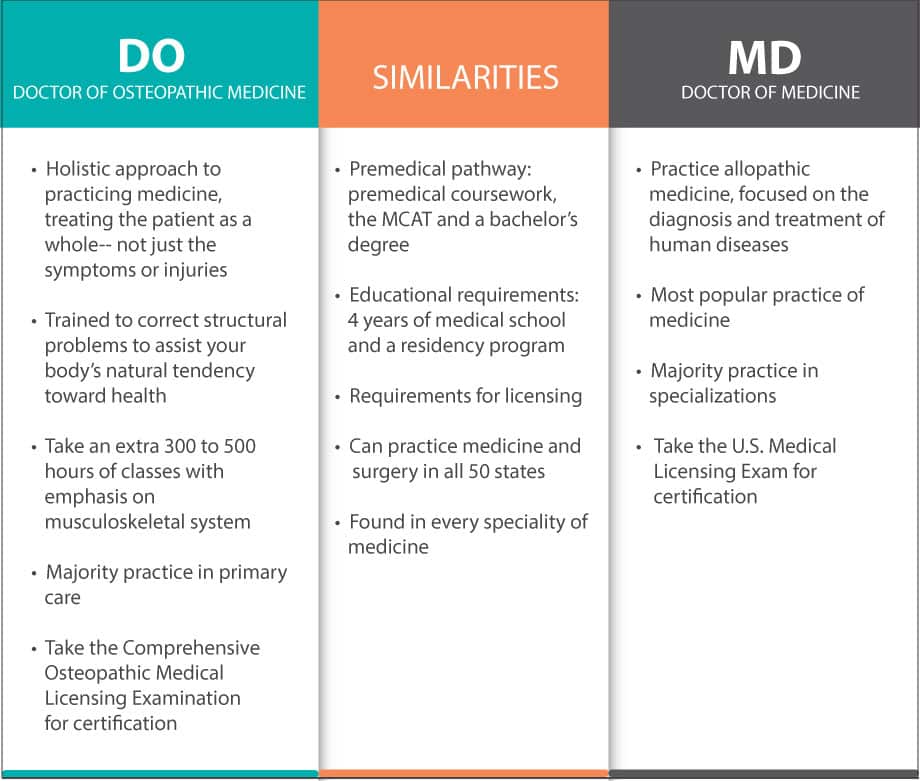When looking at my white coat, sometimes I get a puzzled look from patients when they spot the letters DO behind my name instead of MD. They ask me what the letters stand for and if I’m actually a real doctor. The answer is yes. DOs, or doctors of osteopathy, are medical doctors that share many similarities with MDs, or doctors of medicine, and provide the same quality care.
MDs and DOs are fully licensed physicians, and while both are trained in diagnosing and treating illnesses and disorders and in providing preventive care, the training differs slightly. Like MDs, physicians with a DO are licensed in all 50 states to practice medicine and surgery, as well as to prescribe medications. The education for both degrees is similar and both are required to complete accredited medical residencies.
Throughout college, I was interested in either becoming a doctor, physical therapist or a chiropractor, so after doing some research on osteopathic medicine, I decided becoming a DO was a perfect fit for me. According to the American Osteopathic Association, doctors of osteopathic medicine regard the body as an integrated whole, rather than treating for specific symptoms only. This philosophy of treating the patient and not the symptom really appealed to me and greatly influenced my decision to become a DO.

Dr. Andrew Taylor Still founded osteopathic medicine on the principle that all parts of the body work together and influence one another. We are trained to correct structural problems, what we call somatic dysfunctions, to assist your body’s natural tendency toward health, in addition to prescribing medication(s) if necessary.
Osteopathic medical schools require DO students to spend an extensive amount of time in special classes – between 300 and 500 hours – to learn the musculoskeletal system and the interactions of the body with diseases. We also learn how to realign the body, which is called Osteopathic Manipulative Treatment or OMT.
I have always wanted to take a more holistic approach to helping people, and while any healthcare provider can incorporate this into his or her practice, I like the fact that it was encouraged throughout my training. I continue to use the osteopathic philosophy in my own practice today to give my patients a more natural approach to medicine.




